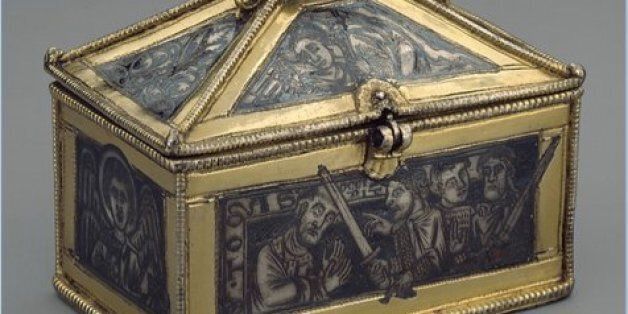
The reports last week of the ghastly murder of rabbis at prayer in a Jerusalem synagogue seemed to us to echo a terrible crime long ago, captured in images and in words that were painfully familiar.
It was the season of Christmas in 1170, and Thomas Becket, archbishop of Canterbury, was in the cathedral celebrating the festival. All of a sudden, "...sacrilegious men entered the house of peace and reconciliation with swords drawn; indeed the sight alone as well as the rattle of arms inflicted not a small amount of horror on those who watched." Thomas was brutally murdered, his brains spilled on the floor of the church.
The gory details provided by eyewitness Edward Grim, who was himself wounded in the attack, sounds for all the world like the recent reports of chaos in Jerusalem. Centuries before the Internet, or even the printing press, word of Thomas's murder spread like wildfire, with reports of the crime "pervading every district of the western world."
The very moment of his martyrdom is captured, close-up, for posterity on a tiny, precious box in the collection of the Metropolitan Museum. There, at the center front, we see one of the murderers, gripping his extended sword as he strikes the head of the archbishop. The swordsman's menacing grimace contrasts with Thomas's pacific gaze. Fashioned in silver, the box is distinguished by the artist's heavy use of the technique of niello; its blackness throws the horror of the scene into stark relief. The raw power of this image makes us witness Becket's murder as if in real time, a medieval equivalent of the graphic reportage that chronicles violence in our own world. The distinction between the victimized archbishop and the rabbis killed in Jerusalem blurs before our eyes. He wears robes, emblematic of his office; they wore the tefillin and tallitot (phylacteries and prayer shawls), emblematic of their prayer.
In the 12th century, as now, the murder was deemed particularly heinous because it took place as the archbishop "stood in prayer by the holy altar." Thomas, just like the rabbis, was in a sacred place. The reassuring notion that houses of God offer sanctuary seems first to develop in the Middle Ages. But the goldsmith who fashioned our container knew better, for on its lid, an angel hovers, witnessing the scene, but not intervening.
The creator of the Metropolitan's box seems to us to be troubled by an even more profound question. Three of Becket's attackers are portrayed. The second and third, squeezed into the right corner of the scene, look not towards their victim, but at each other. A sword is raised, but so is a hand, palm open -- unsure?
Is the artist trying to capture in the midst of cacophonous, horrifying sin, the voice of conscience trying desperately to be heard? Does the artist wonder if the assailants had second thoughts? These were, after all, knights of the realm, Thomas's fellow countrymen. A written account also tries to come to terms with the mindset that could have led them to a "most atrocious crime." It tells us that the murderers were "men of noble race and renowned in arms." In the end, the only explanation is that they "wrought themselves up to the commission of iniquity," "urged on by the fury they had imbibed."
On the reverse of the small niello box, an angel hovers again, this time receiving Thomas's soul, placed, so the chronicler tells us, in the bosom of Abraham.
And what of the murderous knights? It fell to the pope himself to determine an adequate, curing penance. The knights, "wounded in conscience," were ordered to Jerusalem to redeem themselves. It is said that they lived out their days in the Holy City.
We despair that Jerusalem today is not perceived as a site for healing and redemption but rather, increasingly, as a setting for vengeance and violence.